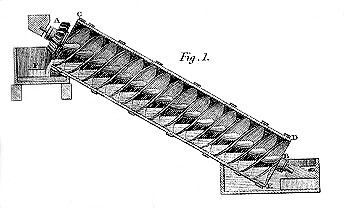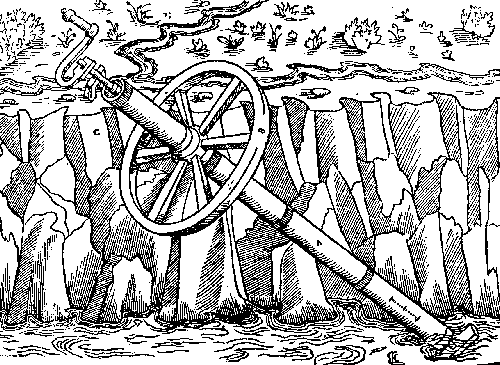Ceredi's Pump
Today, meet the person who reinvented Archimedes' pump. The University of Houston's College of Engineering presents this series about the machines that make our civilization run, and the people whose ingenuity created them.
The common mythology says that engineering and philosophy are separate disciplines. To believe that, we have to close our eyes to the way machines shape themselves to our outlook. The truth is, technology and philosophy each bend to fit one another.
Here's an example: Archimedes invented a really clever pump in the third century BC. It's been used all over the world ever since. It looks like a tube coiled around a long axle. You tilt the axle and put its lower end in water. Then you turn it. The open end of the tube picks up water and, as the coil turns, water passes from one loop to the next until it comes out at the upper end.
It's a very subtle gadget. It's not, as one author put it, something that would be created spontaneously by peasants. Archimedean pumps were widespread in the Classical world. Roman authors described them. Well, they tried to. We've just seen that they are not easy to describe.
Archimedes' pump did poorly in the High Middle Ages. Europeans had just rediscovered Aristotle and had strongly bought into his science. Aristotle clearly separated motion into two kinds -- straight line motion and rotary motion. An Archimedean pump used rotation to move water upward along an axis. Because it mixed the straight-line and rotary motion, it made engineers of the late Middle Ages and early Renaissance very uncomfortable.
By 1565 those pumps were so little known in Europe that an agricultural engineer named Giuseppe Ceredi received a patent for one. Ceredi systematically described the installation of arrays of these pumps for both irrigation and drainage. Naturally we wonder how he could get a patent for a device that was known in books.
But then we compare Ceredi's dimensioned drawings, flow calculations, and economic analysis with the almost unreadable Roman descriptions. Ceredi may or may not've found the idea in the old literature. But, whether he did or not, he had to do a great deal on his own to make it work.
Ceredi clearly had a right-brain ability to visualize, coupled with a left-brain ability to execute and organize detail. That's what it took for him to overcome a philosophically ingrained resistance to an idea. After Ceredi, these pumps quickly gained acceptance across southern Europe. He'd broken the straitjacket of an old way of thinking.
A few years later, Galileo took up full-scale combat with Aristotelian ideas of motion. When Galileo wrote his theory of the pendulum, for example, he first had to break with old ideas about falling. Aristotle would've said that the weight on a pendulum was simply an object experiencing great difficulty in falling.
So Ceredi's reinvention of Archimedes' pump was, in fact, a harbinger -- so much more than mere means to a practical end. It really was a stalking horse for a major philosophical revolution.
I'm John Lienhard, at the University of Houston, where we're interested in the way inventive minds work.
(Theme music)
Drake, S., An Agricultural Economist of the Late Renaissance. Humana Civilitas, Vol 1, On Pre-Modern Technology and Science, A Volume of Studies in Honor of Lynn White, Jr. (Bert S. Hall and Delno C. West, eds.) Malibu, CA: Undena Publications, 1976, pp. 53-73.
This is a greatly revised version of Episode 116.

A Spiral of Archimedes, or Archimedean pump
From the 1832 Edinburgh Encyclopaedia

One of Ceredi's sketches showing an Archimedean pump equipped with a flywheel to sustain its rotation